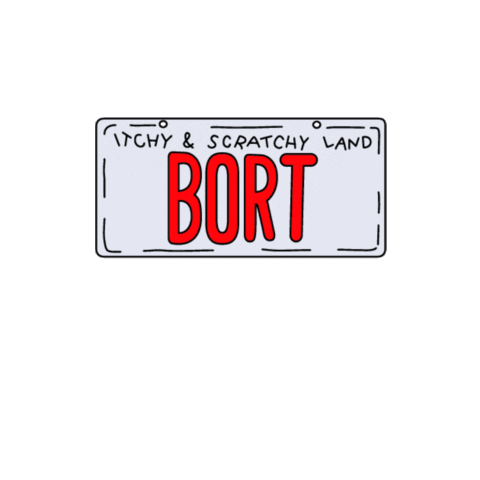Incorporating Giphy GIFs into your website can significantly enhance user engagement and make your content more relatable. GIFs are eye-catching, easily shareable, and can convey emotions and messages that static images or text sometimes cannot. This guide will delve into why GIFs are powerful in digital marketing and the advantages of using Giphy as your source.
Understanding the Power of GIFs in Digital Marketing

GIFs have revolutionized how brands communicate with their audiences. Here’s why they are effective:
- Visual Engagement: GIFs attract attention more effectively than standard images or text. Their movement captivates users and encourages them to spend more time on your page.
- Improved Communication: GIFs can express emotions, humor, and dynamic actions quickly and succinctly, creating a stronger connection with your audience.
- Shareability: GIFs are easily shareable across social media and messaging platforms, which can lead to increased visibility and potential viral marketing opportunities.
- Brand Identity: Using GIFs that align with your brand’s tone can enhance your identity and make your content more relatable and approachable.
Why Giphy is the Go-To Platform for GIFs
Giphy stands out as a leading platform for several reasons:
- Extensive Library: Giphy provides a vast array of GIFs, covering nearly every topic imaginable, making it easy to find the perfect GIF for your needs.
- User-Friendly Interface: The platform is designed for easy navigation, allowing users to search by keywords, categories, or trending topics.
- Integration Capabilities: Giphy offers easy integration with websites and applications, making it simple to embed GIFs directly into your content.
- Brand Partnerships: Giphy collaborates with various brands and creators, ensuring a constantly updated collection of high-quality GIFs.
Step-by-Step Guide to Finding GIFs on Giphy
Finding the perfect GIF on Giphy is a breeze, thanks to its user-friendly interface and powerful search tools. Follow these simple steps to discover the GIF that best suits your needs:
- Visit Giphy: Head over to Giphy.com. You’ll be greeted with a vibrant assortment of GIFs right on the homepage, showcasing trending content.
- Use the Search Bar: If you have something specific in mind, type keywords related to the mood, theme, or event you’re after in the search bar at the top of the page.
- Explore Categories: Giphy categorizes GIFs into themes like “Reaction,” “Cute,” “Food,” and many others. Browse these categories for inspiration if you’re not quite sure what you want.
- Filter Your Results: Once you’ve searched for a term, use the filter options to narrow down the results. You can filter by “Trending,” “Recent,” or even select a specific type of GIF, such as stickers or clips.
- Preview the GIFs: Hover over any GIF to see a quick preview and determine if it fits your creative vision.
- Select Your Favorite: Click on the GIF you like to see it in more detail. On the right side, you’ll find options to ‘Copy Link’, ‘Embed’, or ‘Download’.
By following these steps, you’ll be well on your way to finding the perfect GIF to spice up your website and engage your audience!
Methods to Embed Giphy GIFs on Your Website
Once you’ve found that perfect GIF on Giphy, the next step is embedding it into your website. Here are a couple of simple methods to do just that:
Method 1: Copy and Paste the Embed Code
This is the easiest way to add a GIF to your site.
- After clicking on your chosen GIF, look for the ‘Embed’ option on the right.
- Click ‘Embed’ to reveal the HTML code.
- Copy the provided code.
- Paste the code into the HTML of your website where you want the GIF to appear.
Method 2: Use the Direct Link
If you prefer to use a direct link or if your website has a specific content management system (CMS), follow these steps:
- Just like before, select your GIF and click on ‘Copy Link’ on the right.
- From the options, choose the type of link you want (usually “GIF Link”).
- Past the link into your website’s image tag, as follows:
<img src="GIF_LINK_HERE" alt="description">
By using these methods, embedding GIFs into your website is a straightforward task that can significantly enhance your site’s visual appeal and engage your visitors more effectively!
Ensuring GIFs Align with Your Brand Aesthetic
When adding GIFs to your website, it’s crucial to ensure that they align with your overall brand aesthetic. This harmony helps maintain a cohesive visual identity and reinforces your message in the minds of your audience. Here are a few key considerations to keep in mind:
- Color Palette: Choose GIFs that reflect your brand’s color scheme. For instance, if your brand uses a palette of soft pastels, opt for GIFs that complement these tones rather than clashing with bright, bold colors.
- Style and Tone: Consider the tone of your brand. If your brand is playful and casual, select humorous GIFs that resonate with that vibe. Conversely, if your brand is more professional, opt for GIFs that maintain a degree of seriousness and professionalism.
- Message Consistency: Ensure that the GIFs you choose convey messages or emotions that align with your content. A mismatch can confuse or disengage your audience instead of enhancing their experience.
By taking these factors into account, you can elevate your website’s aesthetic and create a more engaging user experience. Remember, your goal is to connect with your audience while staying true to your brand’s identity!
Best Practices for Using GIFs to Boost Engagement
Using GIFs effectively can significantly enhance engagement on your website. However, there are some best practices to keep in mind to ensure they serve their purpose without overwhelming your audience. Here are a few tips:
| Best Practice | Description |
|---|---|
| Limit the Number | Too many GIFs can be distracting. Aim for a strategic placement where they enhance the content, not overshadow it. |
| Optimize for Load Times | Large file sizes can slow down your site. Use tools to compress GIFs without sacrificing quality. |
| Use Context | Ensure that the GIFs you choose support the surrounding content and resonate with your audience’s interests. |
| Test for Mobile Compatibility | Always check how your GIFs look and behave on mobile devices to ensure a seamless experience for all users. |
By following these best practices, you can harness the full potential of GIFs in boosting website engagement. Remember, it’s all about enhancing the user experience while keeping their attention focused on what really matters!
Common Mistakes to Avoid When Using GIFs
Using GIFs can be a fun and effective way to enhance your website, but there are some common pitfalls to watch out for. Let’s break down the major missteps that could detract from your site’s appeal and performance:
- Overusing GIFs: While GIFs can add a lively touch to your site, too many can be overwhelming and distracting. Focus on using them purposefully to underscore key points.
- Choosing Low-Quality GIFs: Poor-quality GIFs can reflect badly on your brand. Opt for well-crafted GIFs that load quickly and look sharp.
- Ignoring Accessibility: Not all users can appreciate moving visuals. Always provide text alternatives or descriptions for GIFs to ensure your content is accessible to everyone.
- Neglecting Load Times: Large GIF files can slow down your website. This can frustrate users and lead to higher bounce rates. Compress GIFs or consider alternatives like HTML5 videos for better performance.
- Using GIFs Without Context: Every GIF should serve a purpose. Make sure your selected GIF enhances the message rather than causing confusion.
- Not Testing on All Devices: Remember that not all users access your website on a desktop. Test your GIFs on mobile devices to ensure they display well and enhance the user experience.
Avoiding these common mistakes will help you create a more engaging and effective web presence, ensuring that GIFs work for you rather than against you!
Measuring the Impact of GIFs on User Engagement
Once you’ve started using GIFs on your website, it’s essential to gauge their impact on user engagement. Here are some effective methods to track and analyze how GIFs are performing:
- Utilize Analytics Tools: Tools like Google Analytics can help you track user interactions. Look specifically at metrics such as bounce rate, average session duration, and scroll depth to see if GIFs have a positive effect.
- Track User Feedback: Incorporate methods for direct user feedback—think feedback forms or quick polls. Ask users what they think of the GIFs and if they find them engaging.
- Monitor Social Shares: If applicable, keep an eye on how often your content containing GIFs gets shared on social media platforms. Increased shares can indicate enhanced user engagement.
- A/B Testing: Create two versions of a page—one with GIFs and one without. Measure how each performs in terms of engagement and conversions to identify the more effective approach.
- Observe User Behavior: Heat mapping tools can demonstrate how users interact with your GIFs. See if they draw attention or if users tend to scroll past them.
By employing these strategies, you can not only assess the impact of GIFs but also refine your approach to ensure they are contributing positively to user engagement on your website.
How to Add Giphy GIFs to Your Website for Increased Engagement
Engaging your audience is crucial for the success of your website. One effective way to keep your visitors entertained is by incorporating animated GIFs from Giphy. Giphy is a popular platform that allows users to browse and share a vast library of GIFs. Here’s how to seamlessly add Giphy GIFs to your website:
Step-by-Step Guide to Adding Giphy GIFs
- Find Your GIF:
Visit Giphy and browse through categories or use the search bar to find specific GIFs related to your content.
- Copy the GIF Link:
Once you’ve selected a GIF, click on it to open the details. Locate the ‘Copy Link’ option and select the embed code or the GIF URL.
- Embed in Your Website:
Depending on your website platform, you can embed the GIF using the following methods:
- HTML Code: Use the embed code provided by Giphy. Paste it into the HTML of your webpage.
- Direct Link: If your platform supports it, you can simply paste the GIF URL where you want it displayed.
- Test and Publish:
After adding the GIF, preview your changes to ensure it displays correctly, then publish your updates.
Benefits of Using GIFs
Incorporating GIFs into your content can:
- Enhance user engagement
- Add a touch of personality and fun to your site
- Make your content more shareable on social media
Considerations
While GIFs can boost engagement, consider using them sparingly to avoid slowing down your website’s load time.
Conclusion and Final Thoughts on Using Giphy GIFs
Incorporating Giphy GIFs into your website can significantly enhance user engagement and overall experience, providing a dynamic and visually appealing element to your content. Remember to balance GIF usage with website performance for optimal results.


